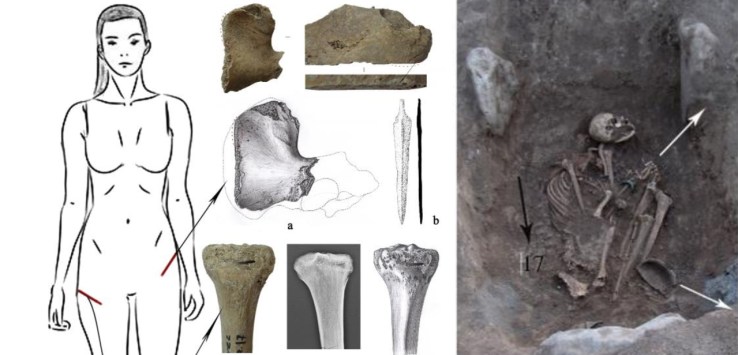Burial of an ancient female warrior discovered in Armenia
A teenage Armenian woman was at the frontline of a war more than 2,000 years ago. Now her newly discovered remains allow archeologists to see how ancient societies lived and died on the battlefield.

In 2017 researchers excavated the poorly preserved remains and found the woman buried on her side with flexed arms and legs and her head oriented to the northwest.
Her skeleton was “fragmented and incomplete,” with cracks and fractures occurring on her bones in the thousands of years since her burial.
An analysis of her dental wear, cranial sutures, and other indicators of trauma allowed for an understanding of the type of injuries she suffered just before her death.
A metal arrowhead was found buried in her femur likely shot by a bow, strongly suggesting that the woman was injured in some type of combat.
Healing around the site of the arrowhead indicates that she lived for some time with the injury before dying, possibly from an additional sword or hatchet blows to the pelvic bone, femur, and tibia in a “rich array of traumatic lesions.”
“During the combat, the woman had been most likely exposed to direct blows to the defensive shield (the power transmitted from the end of the shield to the ulna), or direct blows when the forearm was used to ward off the blow,” study author Anahit Khudaverdyan told daily mail.
It was determined that the woman died aged between 20 and 29. Radiocarbon dating of the artifacts located in and around her grave indicates that she was likely a woman of stature.
“We know nothing about her social position, but the burial with rich inventory testifies to high status.
Though the overall position of women was lower than men, yet, on the whole, the position of woman was good,” write the authors of the study published in International Journal of Osteoarchaeology, noting that upper-class women enjoyed the freedom and were generally well-respected.

During her time, the Kingdom of Urarti (Urartu), or Bianili, was an “uncommon developed culture” flourishing in the Armenian Highland from the 9th century BCE to 585 BE.
Strategically located between Europe and Asia, it is likely that the society had contacts with major empires of the ancient world. The defensive architecture suggests that the city likely experienced warfare and fear of assault.
As soon as they passed eight or 10, boys rode on horseback and hunted deer, buffalo, and mountain goats in much the same way that they used for defensive purposes.
“For the people of the Armenian Highland, bows, and arrows turned into an efficient weapon to be used against the intruders, particularly when shot from horseback.
Research shows that both men and women rode horseback while participating in battles and hunting. This is evidenced by female warrior graves discovered in many parts of the Caucasus,” wrote the authors.
Her remains are the second burial discovered in Armenia that provides evidence on female warriors.
As Khudaverdyan notes, evidence suggests that Urartian kings fought with the enemy along with their wives, potentially serving as the “prototype of the Amazons,” the Greek myth of the tribe of warrior women that supposedly came from the Caucasus, which Armenia is part of.


